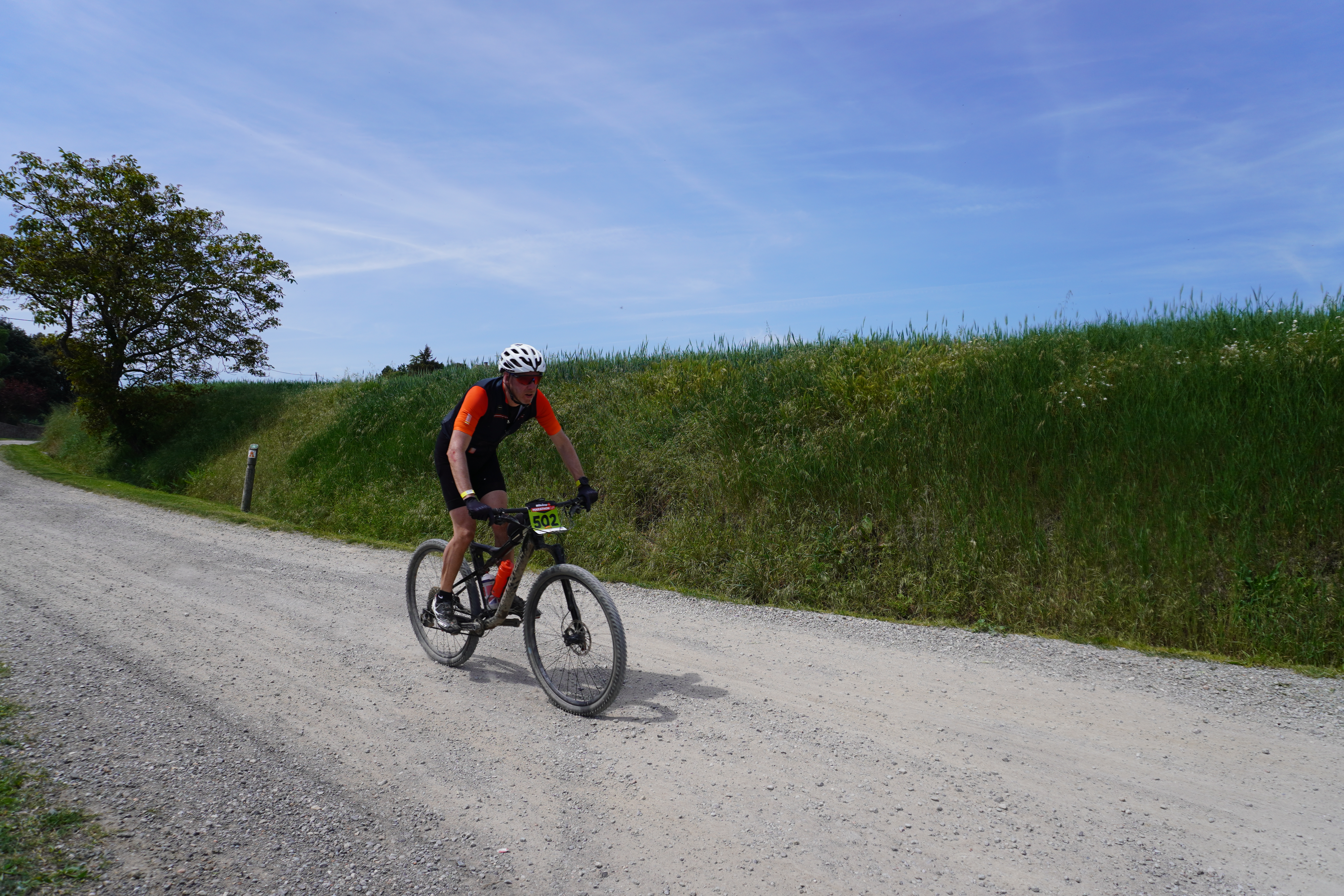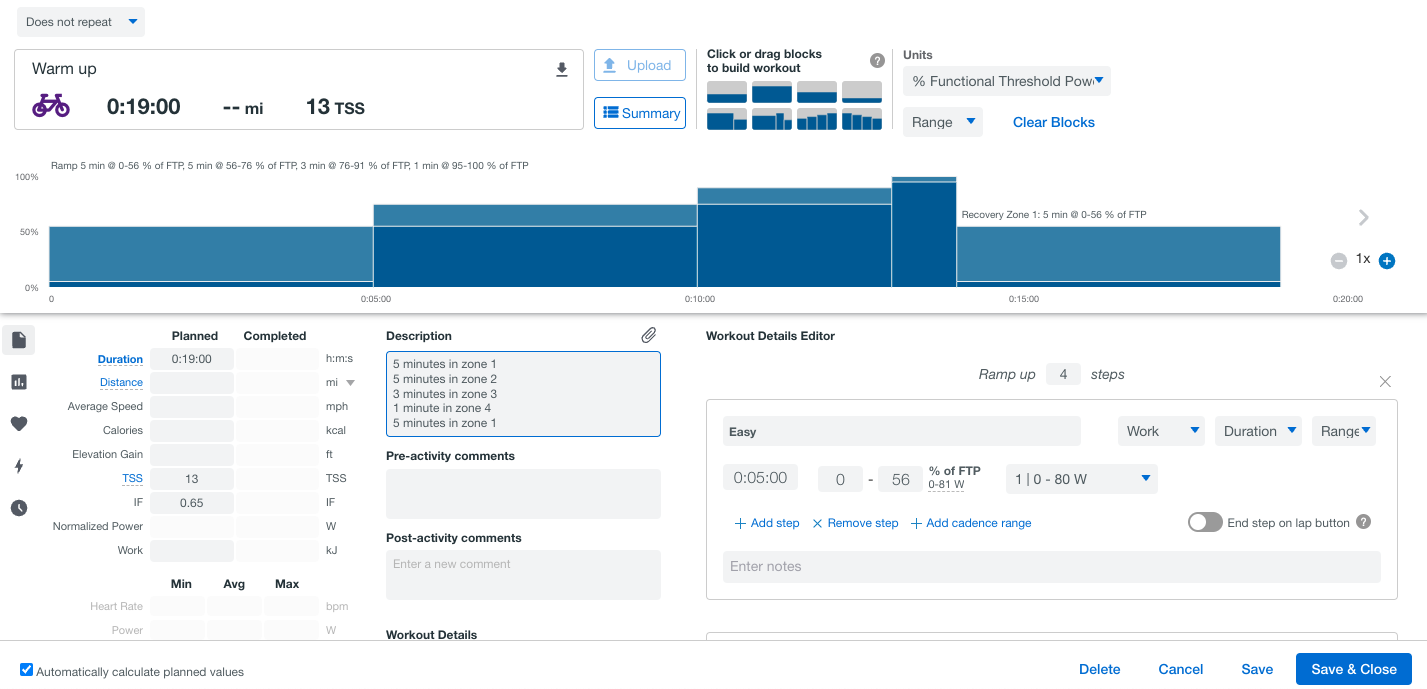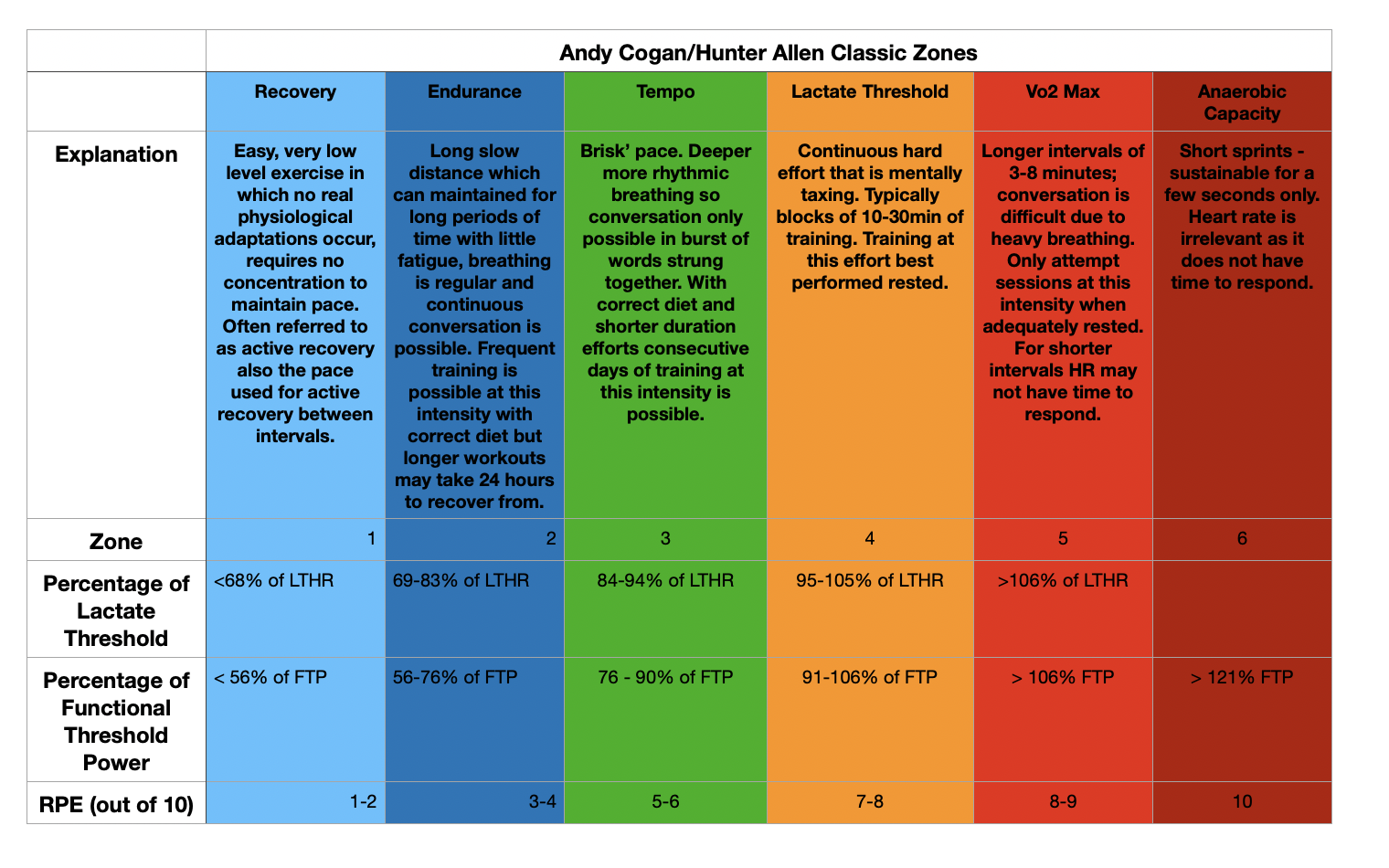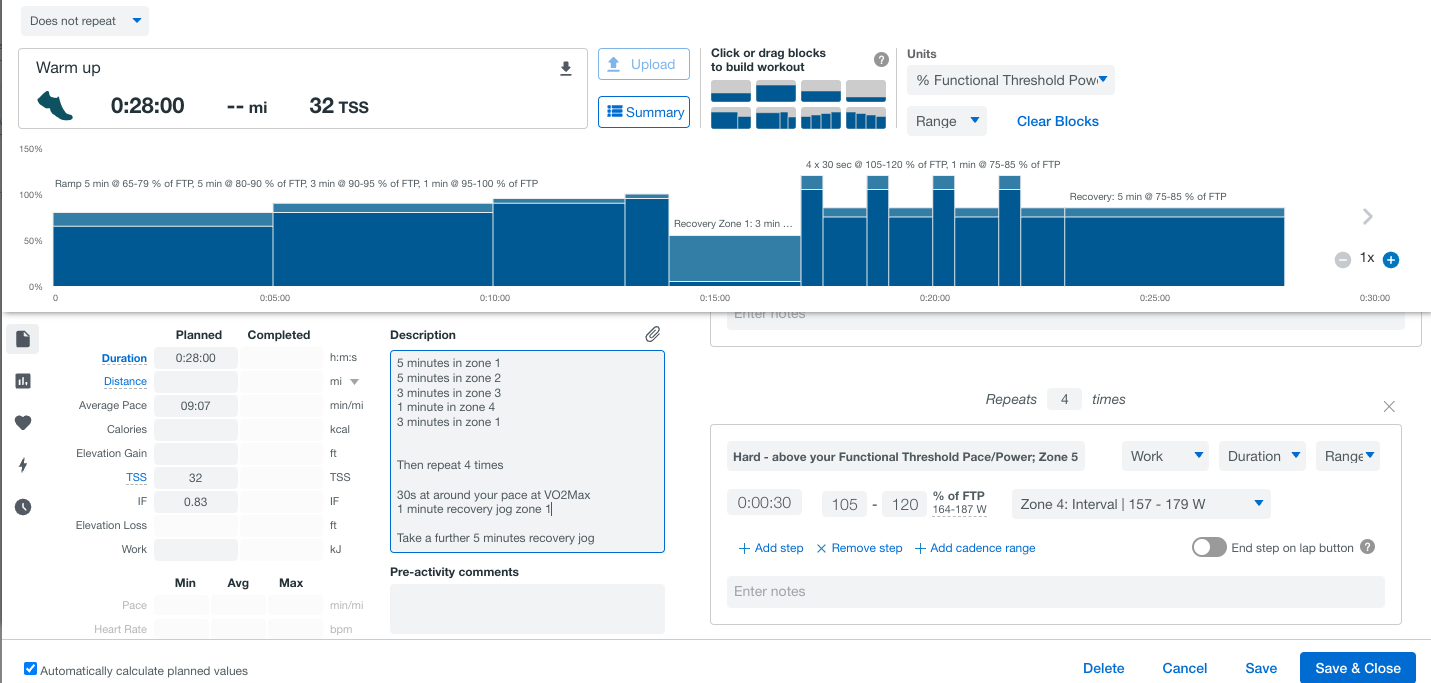What Performance Tests Should I Do in My Ultra Endurance Cycling or Running Training?

When you train seriously you want to know that the training you are doing is working. The only way to truly know this is to test. So what tests are good to do for ultra endurance cycling or running training?
There are a lot of tests out there and it can be a bit confusing. The most important thing is to know what you are testing and why. I test my athletes for three main reasons:
To provide a bench mark (so we know where we are starting from)
To measure improvement
To keep training zones up to date
So the nature of the test can vary depending on what we want to use as a benchmark of fitness and what we plan to work on. The important thing is that all else being equal we need to do the same test for the bench mark and the measurement of improvement and have both tests be the same (or as similar as possible).
The two tests I most regularly use with athletes training for ultra endurance cycling or running events are Joe Friel's half hour time trial and the 5 minute max power/pace test.
Joe Friel's Half Hour Time Trial
This is a good test to help you identify your Functional Threshold Power and/or Pace and your Lactate Threshold Heart Rate. From this you can then calculate your training zones with some accuracy.
How to Perform the Test
The test is simple to perform and to analyse.
1) Warm up for 15 to 20 minutes including some faster paced sections at about the intensity of the main set (the test). I like to use the a ladder as shown below.

2) Cycle (or run) as hard as you can for 30 minutes; this can either be on a steady incline or a flat surface. (If you are testing your pace/speed rather than power you will need to do this on a flat surface unless you are interested in your VAM). The aim is to keep going at the same pace/power for the full 30 minutes and for this to be the highest power/fastest pace that you can do for that time (ie at the end of the 30 minutes you have to stop or slow down). This equates to 7-8 out of 10 Rate of Perceived Exertion, which is what you will need to primarily follow as you are testing.
3) Cool down with some easy spinning (or a short jog/walk if you are running).
How to Interpret the Results
Your average power/pace for the duration of the half hour time trial is your functional threshold power/pace.
Your average heart rate for the last 20 minutes of the half hour time trial is you Lactate Threshold Heart Rate.
You can then calculate your training zones using percentages of these figures as in the example below using Andy Cogan's Classic Zones. If you use a training application like TrainingPeaks, Garmin, Suunto you need only put in your threshold and the app will work out your zones for you. Be sure to familiarise yourself with the zones as set, not all apps give the same name or number to the same zones.

I like this test because its length means if you have good anaerobic capacity (ie you are a good sprinter) this will not give a falsely high reading for your Functional Threshold Power/Pace (because you are unable to rely on your anaerobic capacity to 'hang on' for 30 minutes in the way you might be able to in a shorter test).
The disadvantage of this test is it is hard to do and if you are just starting out cycling or running you are unlikely to be fit enough to do the test at the right intensity.
This test requires some experience to pace correctly and to some extent improvements in repeated tests initially may be down to an athlete getting better at the test.
5 Minute Max Power/Pace Test
This test is a good way to identify your power/pace at VO2Max. It is simple to do, and although you are working hard for 5 minutes it is not so taxing that it will interfere with your day to day training. You can even do it as part of a session or in the same session as a test of shorter time powers.
How to Perform the Test
1) Warm up in a similar way to the previous test but add in some faster shorter efforts at about the intensity of the main set (the test) as in the example below.

2) 5 minute time trial. Cycle (or run) as hard as you can for 5 minutes; this can either be on a steady incline or a flat surface. (If you are testing your pace/speed rather than power you will need to do this on a flat surface unless you are interested in your VAM). The idea is that you maintain the same pace for the full 5 minutes and at the end of the 5 minutes you either have to stop or slow down. This will be 8-9 Rate of Perceived Exertion, which you will need to primarily follow as you are testing.
3) Cool down with a few minutes of easy spinning (or jogging if you are running.
How to Interpret the Results
Your average pace or power for the 5 minute time trial equates to your power/pace at VO2Max. This will give you a much more precise pace/power at which to do your VO2Max intervals.
It can be good to check whether your power/pace at VO2max matches with the calculated results from the Functional Threshold Test described above. I usually set VO2Max training sessions based on average 5 minute power/pace rather than the automatically extrapolated VO2Max from a Functional Threshold Test.
Comparing your Functional Threshold Power with your power/pace at VO2max can inform your next block of training; if your Functional Threshold Power/Pace is very close to your power/pace at VO2Max then you may need to focus on some VO2Max workouts to raise this and create space for more improvement at your Functional Threshold Power/Pace.
The heart rate data for this test is largely irrelevant; true VO2Max (the maximum volume of oxygen an athlete can utilise per minute) can only really be accurately tested with a lab test. When you do VO2Max training your heart rate does not have time to respond so you either have to do the sessions to Rate of Perceived Exertion or to power/pace.
I like this test because it is simple to perform and interpret; it is easy to set up good, repeatable test conditions to provide consistency when repeating the test. As it is relatively short it can be completed on a de-load week (when volume is lighter) without compromising recovery.
The disadvantage of this test, as with the Joe Friel Half Hour Test, is it also requires some experience to pace correctly and to some extent improvements in repeated tests initially may be down to athlete getting better at the test.
I would only use this test with more experienced athletes who have some experience of speed work.
How frequently should I test?
To keep your training zones up to date or to check that what you are doing is working testing every 6-8 weeks is enough, it takes about this long for a physiological change to take effect. If you really don't like tests you can choose to do them less frequently (every 8-12 weeks).
I usually test at the start and end of the block of training with the test relevant to the focus of the training block (ie VO2Max if we have been working on that, Functional Threshold Pace/Power if we have been working on that).
If you are coming back after a long break it can be good to do a test after 4-6 weeks of easy base training to update your zones and ensure you are training at the right intensity.
Other Tests
If you are training for an event where sprinting is important you may want to test your sprinting ability. The simplest way to do this is to do some 5-10 second sprints (from a rolling start) and see what your maximum power/pace is.
If you are not yet ready for either a functional Threshold Pace/Power Test or a 5 minute max pace/power test you can do a simple power/pace to heart rate test. For this all you need to do is ride (or run) the same course at the same (zone 2) heart rate over regular intervals and see how you get faster for the same effort. Ideally the course would be about 90 minutes for cycling and about 1 hour for runners.
A good test for ultra endurance athletes is the 'Durability Test' where you test your power (before) and after a decent amount of endurance. This again is easy to perform and the main thing to note is the difference in power/pace output between the first and second efforts. To do the test you simply cycle/run up hill hard (8 out of 10 RPE) for 10 minutes, cycle (or run) in your endurance zone for 2 hours and then repeat the 10 minute climb at the same 8 out of 10 RPE).
Additional Questions
Do I have to test?
There is no obligation on any athlete outside the professional and (inter)national realm to test; some athletes are very data driven and like to keep track, others prefer to work to feel and keep more of a fun element to their training.
As most experienced athletes when given a comprehensive scale, can train at an accurate intensity, you may prefer to just use Rate of Perceived Exertion for all your training.
Given that zones are not fixed and can change with fatigue levels I encourage all my athletes to cross check the hard data they are seeing as they train with RPE and defer to RPE if they do not match.
March 26, 2024


Comments